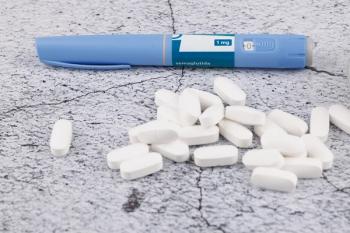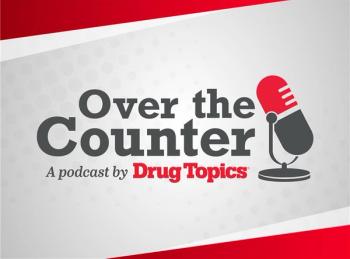
- Drug Topics October 2019
- Volume 163
- Issue 10
The Truth About Statins
Statin regimens may need tweaking to deliver optimal results.
A recent
For the
“Several dozen trials in the past 30 years have demonstrated efficacy and safety of these medications in cardiovascular risk reduction,” says
Trending:
While the study did not detail the reasons for patients having a suboptimal response, one reason may be that the patients were not taking the right statin. According to Cardoso, those study participants with a less than optimal response were prescribed lower-intensity statin therapy and the study used the standard of a 40% reduction in LDL-C that only applies to patients started on high-intensity statin therapy. When it comes to primary prevention, most patients are started on a moderate-intensity statin, which only decreases LDL-C by 30-50% on average.
“Therefore, over a 40% reduction in LDL-C is not anticipated across the board in primary prevention patients,” says Cardoso.
The study mentioned, but did not detail, the incidence of noncompliance. While some patients’ statin regimen may need adjusting to work more efficiently, the most common reason that regimens don’t work is that patients don’t take the statin.
“It is nearly impossible for patients not to reduce cholesterol if they take a statin as prescribed,” says Joseph Saseen, PharmD, professor and vice chair, department of clinical pharmacy, University of Colorado Anschutz Medical Campus. “Some may not see optimal reduction, but if cholesterol is not lowered, it is 99.99% because of nonadherence.”
In some cases, patients don’t take statins as prescribed because they don’t fully understand the purpose of their medication or have misconceptions that lead them to be skeptical of the benefits versus risks.
Read More:
“Pharmacists are in an excellent position to help out with this, as we are the last step between picking up the prescription and taking the medication regularly to decrease the risk of medical harm (heart attacks, strokes, etc.),” says Saseen.
There are several reasons patients may not fill or refill a statin prescription. One is the lack of obvious symptoms associated with elevated cholesterol. Patients may have a prescription, but they don’t feel sick.
“It’s not like having a cold, where you feel symptoms and take something to feel better,” says
Intervention has proven to be successful at helping patients comply with therapy. An
Some patients may see filling a statin prescription as a personal failing, says
“At first, they tried exercise and diet to naturally get their cholesterol down,” says Swartz. “It can be a little disheartening not to achieve results and to have to go on medication.”
Trending:
Lifestyle changes can help improve overall cardiovascular health, but these changes may not be enough.
“For patients that have established heart disease, or diabetes, they will need both drug therapy and diet plus exercise to manage their overall condition,” says Saseen. “For primary prevention, patients that are very good with lifestyle changes, diet, and exercise see improvements in cholesterol, typically up to a 10% reduction in cholesterol and perhaps more if they have a high triglyceride problem. Unless they adapt a pure plant-based diet (i.e., vegan lifestyle) they are not likely to reduce cholesterol more substantially.”
That does not mean patients taking statins can skip exercise and eat anything they like.
“If you are on a pharmacological agent like a statin, you also need to be doing other things to make the drug work like it’s supposed to,” says
Some patients may give up on a statin regimen because they don’t realize it’s possible to tweak it. For a start, there are currently more than a half-dozen U.S. FDA-approved statins-atorvastatin, fluvastatin, lovastatin, pitavastatin, pravastatin, rosuvastatin and simvastatin-on the market.
“There are some statins that are much more potent than others and can cause more side effects, while the lower potency ones may not be effective,” says Swartz. “Looking at medications as a group lends limitations.”
Pharmacists can also help identify the right dose.
“Lipid lowering therapy has evolved over the years to the point where statin potency and LDL-C targets are chosen based on individual patient characteristics,” says Cardoso. “This is a potential area for contribution by the pharmacy team to make sure each patient is on the correct dose based on standard recommendations for primary and secondary prevention.”
Read More:
Statins may also interact with a variety of drugs, supplements, or foods, causing symptoms or lowering efficacy. Drinking grapefruit juice can inhibit the working of some statins. Certain drugs, such as calcium channel blockers, which are used to lower blood pressure, can potentially cause an adverse reaction.
“That’s why it’s very important to go to one pharmacy, so the pharmacist can look at your total drug profile,” says Swartz. “You don’t want to start a medication if it is going to interact with your other medication and make you feel worse.”
A small percentage of patients decide to stop statin therapy because they experience side effects, the most common of which are muscle-related symptoms.
“Some people experience muscle weakness and pain and it causes them to either not take the drug like they are supposed to or to completely go off it,” says Beckner. “That will obviously result in it not having the desired effect.”
If soreness and pain are mild to moderate and tolerable, it’s usually advisable to continue treatment and see if the symptoms subside.
“I think that in general the side effects do diminish over time,” says Swartz. “People do get used to it. People may start taking statins and decide right away that they can’t do so and want to stop taking it. Medications with fewer side effects are always an option.”
However, the most noted “side effect” of statins, says Saseen, is that statins save lives.
“Some patients, up to 10% based on studies in real world populations, have side effects,” says Saseen. “Instead of just giving up on the statin, work with your pharmacist to find a different statin or a different dosing scheme that works for you and results in no side effects, in the event they happen.”
Non-Statin Muscle Soreness
“If the pain is persistent, intolerable or severe, then contact your physician,” says Saseen. “They can check three different blood tests to see if there is something ongoing with your muscles (i.e., a serum creatine kinase) or if there is another cause of muscle symptoms (low serum vitamin D or hypothyroidism as indicated by an elevated serum thyroid stimulating hormone).”
Trending:
True myopathy, with elevated enzymes of muscle injury and rhabdomyolysis, is exceedingly rare, with only a handful of cases for every 10,000 treated patients.
“There is also a mild increase in diabetes although such risk is primarily restricted to patients with significant risk factors for developing diabetes and there is a clear net benefit in terms of risk reduction with statin therapy even in this population,” says Cardoso. “Finally, the data suggesting over-prescription is dwarfed by data suggesting that under-prescription is much more of a problem.”
If a patient can’t take a statin or if statins don’t sufficiently lower cholesterol or cardiovascular disease risk, non-statin therapies such as Ezitimibe or PCSK9 inhibitors may be added to the regimen.
Pharmacogenomic or gene-drug testing is also being used to pinpoint what medication might work best. These tests look for genetic variants to help determine which medication might be an effective treatment and whether you might have side effects to a specific medication.
“Increasingly, pharmacogenomic tests are coming into play,” says Beckner. “A pharmacist can do a genetic test to see which statin drug might not work at all because a patient’s system might not break it down.”
Pharmacists can administer the test and send it to the lab for results, which then come back to the doctor who interprets the results. In a community pharmacy setting, pharmacists can ask patients to bring in their lab values related to cholesterol.
Read More:
“Pharmacists can then help determine what goal patients should be aiming at,” says Ferrari. Then, a pharmacist can check to see if they are taking the correct statin and dose.”
“When someone tells me they are not taking medication or they are going to stop taking the medication, I ask them why,” says Swartz. “We can discuss it. So, at least they are not going off medication completely. I am really not in the business of recommending one statin over another. I don’t see that as my role. I like to arm patients with information so they can talk to their healthcare provider.”
Patient education can help prevent cardiovascular events by stressing the importance of compliance and by suggesting adjustments to personalize regimens.
Articles in this issue
about 6 years ago
Opinion: Color Coded Inhalersabout 6 years ago
Pharmacist Collaborations Must Extend to Dentistsabout 6 years ago
Contemplating the Future of List Pricesabout 6 years ago
New Drug Review: Tafamidis Meglumine for Cardiomyopathyabout 6 years ago
Life-Altering Gene Therapy Pipeline Poses Challengesabout 6 years ago
Solving the Drug Shortage Burdenabout 6 years ago
Providing Healthcare to Transgender Patientsabout 6 years ago
State Laws May Determine Access to Pharmacy-based PrEP Clinicsabout 6 years ago
Official CVS/Aetna Merger: Greater Convenience, Less Cost Reformabout 6 years ago
Alternative Approaches to OpioidsNewsletter
Pharmacy practice is always changing. Stay ahead of the curve with the Drug Topics newsletter and get the latest drug information, industry trends, and patient care tips.































































































































